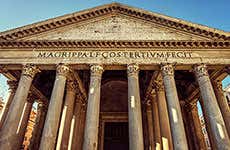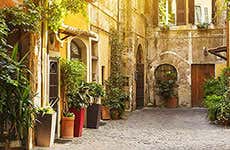
Palatine Hill
Palatine Hill, one of the oldest parts of Rome, towers 40 meters (130 feet) above the Roman Forum and is the most central of the famous seven hills.
Palatine Hill is considered to be the birthplace of the Italian capital and is believed to have been inhabited since the year 1000 B.C.
During the Republican Period, Roman citizens belonging to the upper class settled in Palatine Hill and built sumptuous palaces, of which important traces are still preserved.
According to the legend
Roman mythology talks of the cave that was inhabited by Luperca, the she-wolf that took care of Romulus and Remus, which is located on Palatine Hill. According to the legend, when the brothers grew up they decided to form a city on the banks of the river, but when they could not come to an agreement on some points of the decision, Romulus killed Remus and founded the city of Rome.
What to see on Palatine Hill
On Palatine Hill, you can see hundreds of ruins of imposing buildings that were created for high Roman society in ancient times. Although the whole scene is impressive, these are some of the points that deserve special attention:
- Domus Flavia: The splendid palace Domus Flavia was built in the year 81 B.C. by the order of Emperor Domitian as a public and official residence. There are still some parts of the extensive construction that can be seen.
- House of Livia: This modestly-built house which was built in the 1st century B.C. is one of the best-preserved buildings in Palatine Hill. It's still possible to glimpse the remains of the mosaics and frescoes that at one time cheered up the ceilings and walls.
- House of Augustus: Built as the private residence of Octavian Augustus, the house built on two levels still has a large part of the valued and colorful frescoes that decorated its walls.
- Farnese Gardens: Designed in the middle of the 16th century on the ruins of the Palace of Tiberius, the Farnese Gardens were one of the first botanical gardens to be created in Europe.
- Hippodrome of Domitian: Given the appearance of a Roman circus, it's not known for certain if the stadium was created for holding races, or just to be used as a garden.
- Palatine museum: In this small museum, several discoveries that were made during excavations carried out on Palatine Hill are on exhibition. There are sculptures, frescoes, mosaics, and other objects belonging to the golden age of Palatine Hill.
From Palatine Hill, you can get the best views of the Roman Forum from above.
A walk in Ancient Rome
Palatine Hill is a very pleasant place for a quiet stroll under the shadow of the trees while passing many of the preserved corners of ancient Rome.
It's worth dedicating half a day to visit it since the Roman Forum and the Palatine Hill each cover a very large space that should be very interesting.
Guided Visits to Skip the Lines
The best way to visit while skipping the lines is to reserve our tour, visiting the three main monuments in the city: Colosseum, Roman Forum, and Palatine Hill - all with a specialist guide.
If you prefer visiting at your own pace, we recommend arriving first thing in the morning to visit the Vatican. This way you can hopefully avoid longer lines. Additionally, consider booking the Go City: Rome Explorer Pass to save time as well.
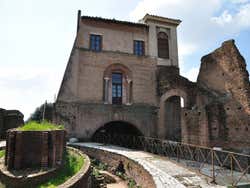
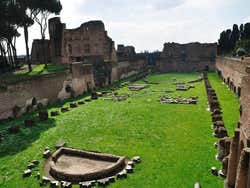
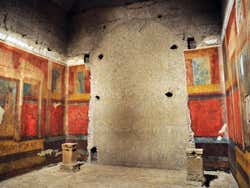
Schedule
From 30 March to 30 September: from 8:30 a.m. to 7:15 p.m.
From 1 to 26 October: from 8:30 a.m. to 6:30 p.m.
From 27 October to 29 March: from 9 a.m. to 4:30 p.m.
Price
Combined ticket for the Colosseum, the Forum and the Palatine Hill:
Adults: 18 EUR
Citizens of the European Union between 18 and 25 years old: 2 EUR
Minors under 17 and over 65s from the EU: free entry.
Colosseum, Roman Forum & Palatine Hill Tour € 72 (US$ 84.54)
Transport
Metro station: Colosseo, line B.
Bus stop: Colosseo, buses: 60, 75, 84, 85, 87, 117, 175, 186, 271, 571, 810 and 850.
Nearby places
Circus Maximus (277 m) Arch of Constantine (339 m) Roman Forum (424 m) Colosseum (478 m) Santa Maria in Cosmedin (492 m)
